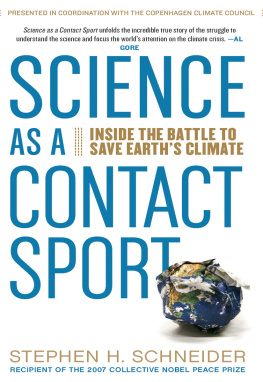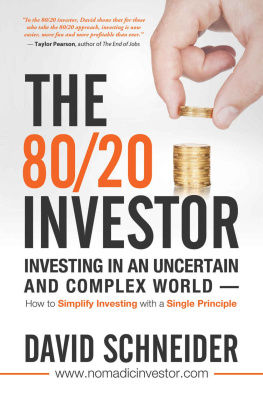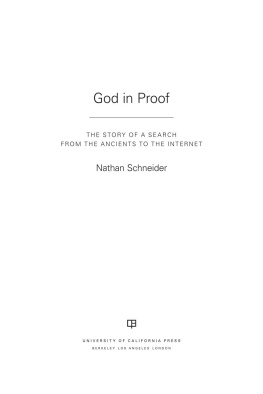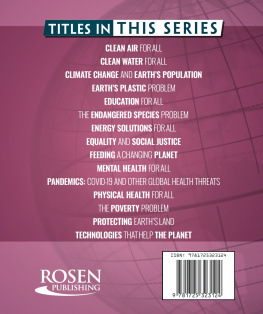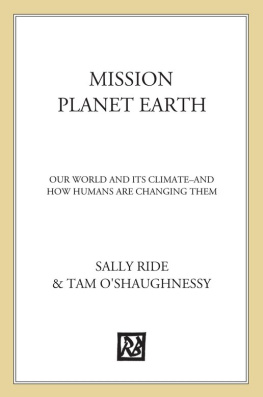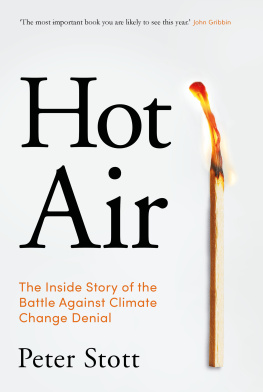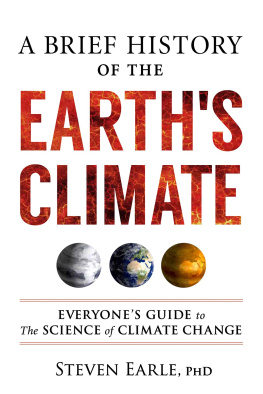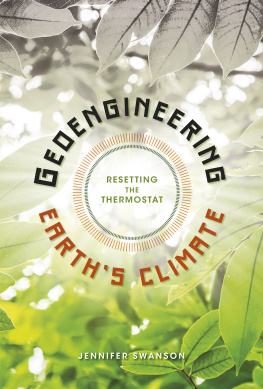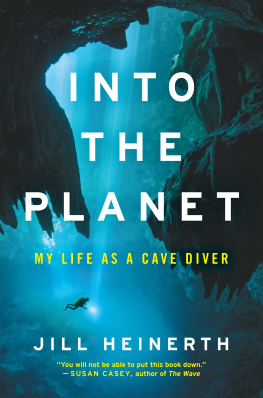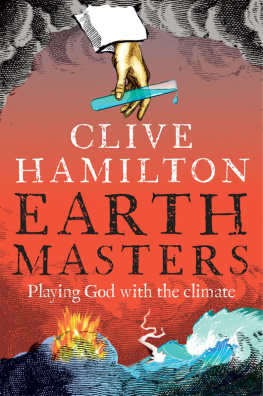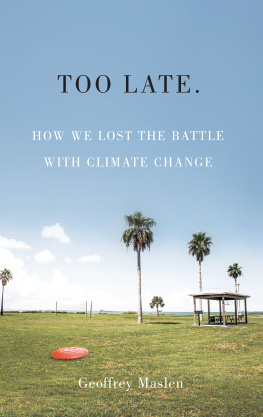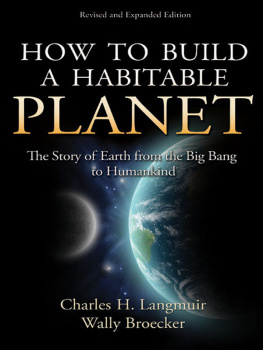SCIENCE AS A CONTACT SPORT
To my grandson Nikolai Cherba, in the hope that our efforts will make the world you inherit from us more resilient
Published by the National Geographic Society
1145 17th Street N.W., Washington, D.C. 20036
Copyright 2009 Stephen H. Schneider. All rights reserved. Reproduction of the whole or any part of the contents without written permission from the publisher is prohibited.
Library of Congress Cataloging-in-Publication Data
Schneider, Stephen H.
Science as a contact sport: inside the battle to save Earths climate / Stephen H. Schneider.
p. cm.
Includes bibliographical references.
ISBN: 978-1-4262-0561-3
1. Greenhouse effect, Atmospheric. 2. Global environmental change. 3. Climatic changes--Government policy--International cooperation. 4. Global temperature changes. I. Title.
QC912.3.S33 2010
363.73874--dc22
2009029206
Illustration Credits: Chapter 1: Data courtesy NOAA, Chapter 1: Image courtesy of the author, Chapter 2: Data courtesy of NOAA, Chapter 5: IPCC, Chapter 6: From Joel B. Smith et al., Assessing Dangerous Climate Change through an Update of the Intergovernmental Panel on Climate Change (IPCC) Reasons for Concern, Proceedings of the National Academy of Sciences 106 (2009): 413337, Chapter 8: Image courtesy of the author.

The National Geographic Society is one of the worlds largest nonprofit scientific and educational organizations. Founded in 1888 to increase and diffuse geographic knowledge, the Society works to inspire people to care about the planet. It reaches more than 325 million people worldwide each month through its official journal, National Geographic, and other magazines; National Geographic Channel; television documentaries; music; radio; films; books; DVDs; maps; exhibitions; school publishing programs; interactive media; and merchandise. National Geographic has funded more than 9,000 scientific research, conservation and exploration projects and supports an education program combating geographic illiteracy. For more information, visit nationalgeographic.com.
For more information, please call 1800-NGS LINE (6475463) or write to the following address:
National Geographic Society
1145 17th Street N.W.
Washington, D.C. 200364688 U.S.A.
Visit us online at www.nationalgeographic.com
For rights or permissions inquiries, please contact
National Geographic Books Subsidiary Rights: ngbookrights@ngs.org
CONTENTS
Chapter One
SMOKE ON THE HORIZON
Chapter Two
DRAWING UP THE BATTLE LINES
Chapter Three
DEEP INSIDE THE BATTLE TO SAVE EARTHS CLIMATE
Chapter Four
A FRAGILE PLANET GROWS ALARMED
Chapter Five
THE BATTLE HEATS UP AND SO DOES THE WORLD
Chapter Six
AWARENESS DAWNS ON PLANET EARTH
Chapter Seven
THE MEDIA WARS: THE STORIES BEHIND PERSISTENT DISTORTION
Chapter Eight
HABITATS FOR HUMANITY AND OTHERS
Chapter Nine
WHAT SHOULD KEEP US AWAKE AT NIGHT
FOREWORD
STEPHEN SCHNEIDER HAS SEEN more of climate change politics and climate change science than almost anyone alive, and hes been so effective at countering the climate skeptics and lobbyists that hes become a special target of their campaign to discredit leading scientists. Such an experience would embitter many, but somehow Stephen Schneider has retained his good humor and balance throughout. Having been at the forefront of the push to have climate change addressed during the dark years of the Bush Administration, this itself is a singular achievement. But Steve has done far more than this, for he is a practicing climate scientist who has contributed significantly, and his passion for science has inspired many, including ourselves, to join the campaign to address climate change.
I first met Stephen Schneider in Japan nearly a decade ago, at a conference on extinction threats. His words on the danger of a changing climate to biodiversity hit like a thunderbolt, and from then on I was convinced of the truly dire nature of the threat that climate change is to our planet. His presentation was clear, packed with information, and funny. It was the last thing I expected from a great man addressing a serious topic, but I soon learned that one of Steves greatest assets is to bring humor to overly serious debates. Indeed, it seems likely that Steve would have had a great career in stand-up comedy if he had not devoted his life to science.
Google Stephen Schneider and you will discover why this gift for humor is so precious. Blogs still use his work from the early 1970s on a possible future ice age to discredit his later climate science. Yet at the time his musings on a possible cooling trend were entirely mainstream. The skeptics seem to believe that science cannot move on and progress. What they have found in Stephen Schneider is a scientist who can and does progress, and who is articulate in his exposure of their deceits.
Each of us tries to contribute to combatting climate change in our own way. In his latest book, Stephen Schneider offers us a history of a bruising time in the politics of climate change and uses those lessons of history to build a pathway forward. It is a time now thankfully behind us, and nobody has contributed more to that extraordinary outcome than Steve himself. He well deserves the Nobel Peace Prize shared with Al Gore and Steves many colleagues in the IPCC.
Tim Flannery
Chairman, Copenhagen Climate Council
INTRODUCTION: THE GLOBAL PLAYING FIELD
THREE AND A HALF DECADES AGO, a few dozen scientists around the globe appeared in front of many of the worlds legislatures, including the U.S. Congress, warning of potential climate changes caused by humans using the atmosphere as a sewer to dump our tailpipe and smokestack wastes. Solutions like halting deforestation, protecting ecosystems, using solar power, requiring better building insulation, and developing fuel-efficient cars were widely proposed.
Sound familiar? We hear a lot of those same terms now. But a generation and a half later we still have no significant policy response at a global level to this mounting threat. How did that happen? Who blocked the efforts? Who tried to help? What can we learn from our failures? Do we still have time to avoid dangerous consequences? Those are among the principal issues that well explore in these pages.
When I stepped into the science arena four decades ago, the term global warming was virtually unheard of. Only a handful of young people were majoring in newly created environmental studies programs. Physicists and meteorologists were running data analyses on mainframe computers using stacks of punch cards, which often took days to type out, card by cardand then hours to process at the computer center. We would drop off the boxes of cards one day and pick them up the next with the results. Color graphics were scarce. Color monitors? In your dreams. For graphics, a big microfilm reader was considered state of the art, and long lines of users waited their turn. Smart computer programmers kept a back-up deck of punch cards to hedge against the dreaded operator who, in a rush to load all the boxes of cards, dropped a box, leaving your days of work scrambled on the floor. Today, my multifunction high-tech watch can calculate as fast as some of the mainframes of yesteryear.
Back then each branch of the sciences inhabited its own discrete domainthe atmospheric researchers didnt talk much to the computer program designers or the oceanographers, let alone the urban designers, ecologists, economists, or sociologists. The concept of an interconnected, interdependent whole Earth system hadnt evolved beyond a few visionary thinkers. Despite that, even in 1970, at the height of the Cold War, atmospheric scientists, at least, communicated internationally. This came about not through some vision of globalization or glasnost decades ahead of schedule, but simply for practical self-interest. Atmospheric scientists everywhere had a common cause: We needed expensive satellites, balloons, ships, and computers from our governments to do our work. International cooperation in data sharing reduced the cost to individual nations.

